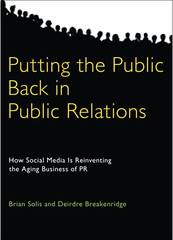The Master List of New Windows 7 Shortcuts
 Windows 7 adds loads of great shortcuts for switching between apps, moving windows around your screen, moving them to another monitor altogether, and much more. Here's a quick-reference master list of the best new Windows 7 shortcuts.
Windows 7 adds loads of great shortcuts for switching between apps, moving windows around your screen, moving them to another monitor altogether, and much more. Here's a quick-reference master list of the best new Windows 7 shortcuts.We're nuts for keyboard shortcuts here at Lifehacker, and Windows 7 brings a handful of great new ones to add to your muscle memory. It's also got a few handy mouse-based shortcuts you'd do well to add to your repertoire. So let's get shortcuttin'.
Window Management Shortcuts
One of the best changes in Windows 7 is the ability to "snap" windows to the side of the screen, maximize them by dragging to the top of the screen, or even move them to another monitor with a shortcut key. Check out the video for a demonstration of how some of the keys work.
The full list of keyboard shortcuts includes:
The full list of keyboard shortcuts includes:
- Win+Home: Clear all but the active window.
- Win+Space: All windows become transparent so you can see through to the desktop.
- Win+Up arrow: Maximize the active window.
- Shift+Win+Up arrow: Maximize the active window vertically.
- Win+Down arrow: Minimize the window/Restore the window if it's maximized.
- Win+Left/Right arrows: Dock the window to each side of the monitor.
- Shift+Win+Left/Right arrows: Move the window to the monitor on the left or right.
You can also interact with windows by dragging them with the mouse:
- Drag window to the top: Maximize
- Drag window left/right: Dock the window to fill half of the screen.
- Shake window back/forth: Minimize everything but the current window.
- Double-Click Top Window Border (edge): Maximize window vertically.

Taskbar Shortcuts
In Windows 7, using the Windows key along with the numbers 1-9 will let you interact with the applications pinned to the taskbar in those positions – for example, the Windows key + 4 combination would launch Outlook in this example, or Win+Alt+4 can be used to get quick access to the Outlook Jump List from the keyboard.


You can use any of these shortcut combinations to launch the applications in their respective position on the taskbar, or more:
- Win+number (1-9): Starts the application pinned to the taskbar in that position, or switches to that program.
- Shift+Win+number (1-9): Starts a new instance of the application pinned to the taskbar in that position.
- Ctrl+Win+number (1-9): Cycles through open windows for the application pinned to the taskbar is that position.
- Alt+Win+number (1-9): Opens the Jump List for the application pinned to the taskbar.
- Win+T: Focus and scroll through items on the taskbar.
- Win+B: Focuses the System Tray icons
In addition, you can interact with the taskbar using your mouse and a modifier key:
- Shift+Click on a taskbar button: Open a program or quickly open another instance of a program.
- Ctrl+Shift+Click on a taskbar button: Open a program as an administrator.
- Shift+Right-click on a taskbar button: Show the window menu for the program (like XP does).
- Shift+Right-click on a grouped taskbar button: Show the window menu for the group.
- Ctrl+Click on a grouped taskbar button: Cycle through the windows of the group.
More Useful Hotkeys You Should Know
 The new hotkey goodness didn't stop with the taskbar and moving windows around—one of the best new hotkeys in Windows 7 is the fact that you cancreate a new folder with a hotkey. Just open up any Windows Explorer window, hit the Ctrl+Shift+N shortcut key sequence, and you'll be rewarded with a shiny "New Folder" ready for you to rename.
The new hotkey goodness didn't stop with the taskbar and moving windows around—one of the best new hotkeys in Windows 7 is the fact that you cancreate a new folder with a hotkey. Just open up any Windows Explorer window, hit the Ctrl+Shift+N shortcut key sequence, and you'll be rewarded with a shiny "New Folder" ready for you to rename.Here's a few more interesting hotkeys for you:
- Ctrl+Shift+N: Creates a new folder in Windows Explorer.
- Alt+Up: Goes up a folder level in Windows Explorer.
- Alt+P: Toggles the preview pane in Windows Explorer.
- Shift+Right-Click on a file: Adds Copy as Path, which copies the path of a file to the clipboard.
- Shift+Right-Click on a file: Adds extra hidden items to the Send To menu.
- Shift+Right-Click on a folder: Adds Command Prompt Here, which lets you easily open a command prompt in that folder.
- Win+P: Adjust presentation settings for your display.
- Win+(+/-): Zoom in/out.
- Win+G: Cycle between the Windows Gadgets on your screen.
Windows 7 definitely makes it a lot easier to interact with your PC from your keyboard—so what are your favorite shortcuts, and how do they save you time? Share your experience in the comments.
The How-To Geek is quickly wearing out the keyboard on his new Windows 7 laptop. His geeky articles can be found daily here on Lifehacker, How-To Geek, and Twitter.















